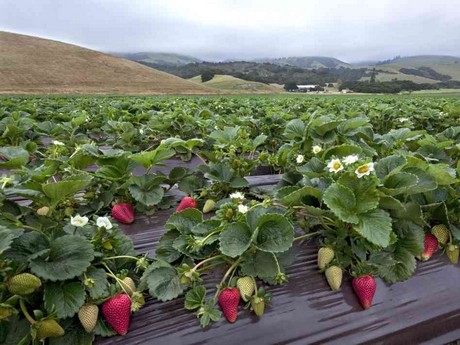 berry Commission has released a first-ever statewide economic report detailing the $3.4 billion economic contributions of strawberry farming to the state. The report titled, Sustaining California Communities: Economic Contributions of Strawberry Farming (February 2014) showcases the positive impact strawberries have on local communities.
berry Commission has released a first-ever statewide economic report detailing the $3.4 billion economic contributions of strawberry farming to the state. The report titled, Sustaining California Communities: Economic Contributions of Strawberry Farming (February 2014) showcases the positive impact strawberries have on local communities.With the best climate in the world for sustainably growing strawberries, California continues to lead the United States and the world in strawberry production. California strawberry farmers are responsible for growing nearly 90 percent of U.S. strawberries. If California were a country, it would be the world's largest producer of strawberries. California's 400 family-owned strawberry farms generate an estimated 70,000 farm jobs, while growing strawberries on less than 40,000 acres (less than one percent of all California farmland).
"Not only does California have the best climate on earth to grow strawberries, it also has the most innovative and hardworking strawberry farmers in the world," said Rick Tomlinson, President of the California Strawberry Commission. "These 400 small family farms are the foundation for on-farm jobs, as well as packaging, shipping, processing, marketing, nutrition, science, and export jobs that create opportunity in our Central Coast communities and healthy food for consumers."
Strawberry farming has a multiplier effect, creating jobs and generating revenue beyond the farm. For every farm dollar made, 97 cents is invested back into the community. Strawberry farming accounts for an estimated $108 million in annual tax revenue. This in turn supports local, state and regional government services. Taxes support teachers, police and firefighters, and through a dedicated program, college scholarships support higher education opportunities for children of strawberry farm workers.
"California strawberry farming is a tremendous asset to the state and nation," said economist Jim Schaub, Ph.D. "The dollars that come into strawberry farms go back out as wages, land costs, payments for farm inputs and services, regulatory costs, and property and business taxes."
To view the complete report





